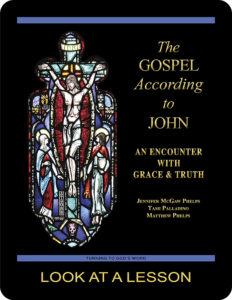condemn
 What is the biblical meaning of the word condemn? In the liturgical readings this week, the scribes and Pharisees bring to Jesus a woman caught in the act of adultery as a means of testing him. In the Gospel According to John 8:5 (NABRE), they pose their question: “Now in the law, Moses commanded us to stone such women. So what do you say?”
What is the biblical meaning of the word condemn? In the liturgical readings this week, the scribes and Pharisees bring to Jesus a woman caught in the act of adultery as a means of testing him. In the Gospel According to John 8:5 (NABRE), they pose their question: “Now in the law, Moses commanded us to stone such women. So what do you say?”
This passage relies on a strong legal theme that runs throughout the Fourth Gospel. The Jewish religious leaders bring a situation before Jesus in which they know the law and have clear proof of guilt or innocence—the woman was caught in the act. What are they asking of Jesus?
In the Gospel According to John 8:11 (NABRE), Jesus gives his answer to the woman: “Neither do I condemn you. Go, and from now on do not sin any more.” From the Greek, it’s much clearer what’s going on here. The word translated as “condemn” is κατακρίνω (katatrino), which means “to cast judgment.” In the legal process of the time, katatrino references what we today see as the sentencing portion of a hearing. Jesus isn’t saying that the woman is innocent, but rather he’s refusing to pronounce the death sentence himself. In fact, Jesus seems to acknowledge her guilt when he says to her: “Go and sin no more.”
With this distinction in mind, we can see more clearly what the Pharisees had hoped would happen. Jerusalem at the time was under Roman rule, and the Romans had forbidden the Jews to put anyone to death. This comes into play again later in the same Gospel when the leaders are themselves looking to execute Jesus and must go through the Roman authorities to do so.
The Jewish religious leaders are attempting to catch Jesus in a lose-lose situation. Jesus either can pronounce judgment and draw the wrath of the Romans or he can deny the law of Moses. By their reasoning, either option is bad for Jesus. Regardless of the fascinating but impenetrable matter of what Jesus writes on the ground, his response passes the same dilemma back onto the religious leaders—at which point they all opt to leave the scene rather than to choose a side.
This pattern is common of Jesus’ interactions with the Jewish religious leaders. They attempt to find a lose-lose scenario to lead Jesus into a trap, and Jesus finds an alternate approach that avoids the trap. What other examples can you think of from the Gospels?
related topics: forgiveness; judgment; religious law; witness & testimony
you also may like our study of the Gospel According to John
 The Gospel According to John: An Encounter with Grace & Truth, a 25-lesson Catholic Bible study with an imprimatur, examines the Fourth Gospel’s view of Jesus Christ as the Son of God, with special emphasis on the institution of the sacraments of the Church as the means by which Christians are purified and made holy. This recently revised study includes maps and additional commentary, and takes a closer look at the way in which Jesus relates to individual men and women. Click on the book’s cover to view a sample lesson.
The Gospel According to John: An Encounter with Grace & Truth, a 25-lesson Catholic Bible study with an imprimatur, examines the Fourth Gospel’s view of Jesus Christ as the Son of God, with special emphasis on the institution of the sacraments of the Church as the means by which Christians are purified and made holy. This recently revised study includes maps and additional commentary, and takes a closer look at the way in which Jesus relates to individual men and women. Click on the book’s cover to view a sample lesson.
 Click on the picture of the statue of Moses with horns (above) to learn more about Lost in Translation. A new entry is archived each Monday. Contact us to receive Lost in Translation by email every week. You may use any of the contact links on our website to ask Matthew a question.
Click on the picture of the statue of Moses with horns (above) to learn more about Lost in Translation. A new entry is archived each Monday. Contact us to receive Lost in Translation by email every week. You may use any of the contact links on our website to ask Matthew a question.
